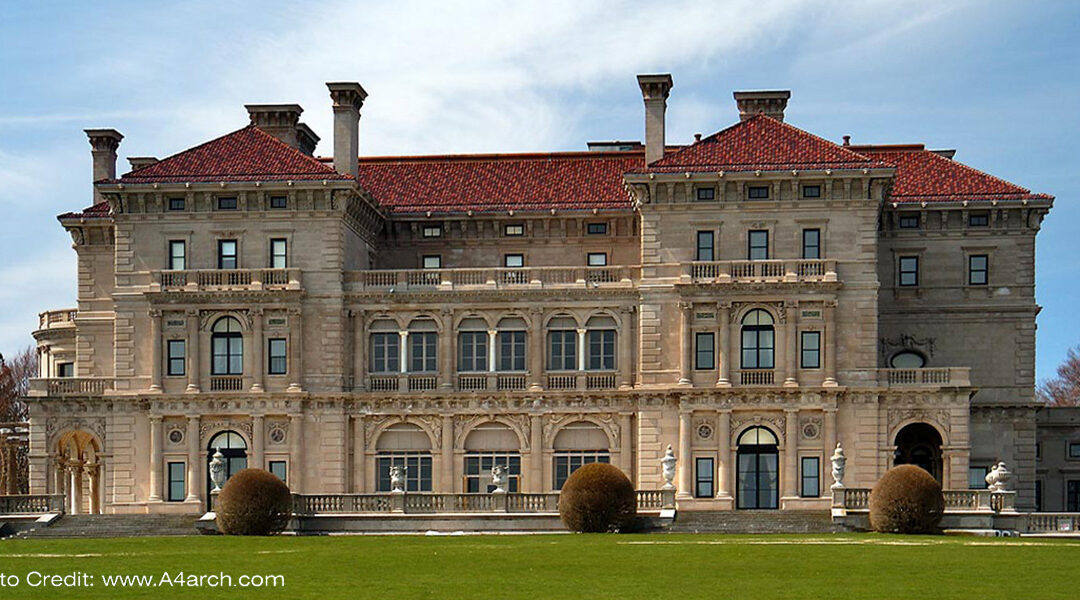As Portsmouth ends the celebration of its founding 375 years ago, Newport’s celebration of the same birthday is just beginning. There are very few communities in America that have been around longer than Newport and none that are better preserved from an architectural standpoint. Since its founding in 1639, Newport has gone through an amazing number of phases: from early colonial settlement to major port to war-ravaged wasteland to Victorian Era watering hole for the wealthy to naval station to it its complex present-day configuration. At each step in this evolution, Newport’s transformation has been marked by strategic additions to its architectural fabric and the city remains one of the most remarkable intact collections of historic buildings anywhere in the United States. From the time of the American Revolution to the present day the city has neither grown so quickly nor grown so poor that the old structures were lost and our town could easily be called the “America’s Last Wooden City” as so many of our structures are still the old balloon frame structures of more than a hundred years ago, which is a form of construction abandoned elsewhere for stone, brick, concrete, and steel.
Newport’s great architecture has been documented in countless books but several are particularly worthy of being singled out for timely impact or comprehensive breadth. One of the early revivals of Newport as a place of great historic significance is The Architectural Heritage of Newport Rhode Island, written by Antoinette Downing and Vincent Scully (1952). The opening preface of this book stated its hope “that the publication of this book will bring fresh attention to Newport’s ancient architecture and thereby help stem the tide of neglect that has steadily been submerging many of the town’s colonial buildings.” So successful was this effort, through the book and Scully five decades of teaching at Yale College, that it is hard to imagine that Newport’s importance had ever been lost or that its buildings had fallen into the serious disrepair documented in the book’s many contemporary photographs. It was from Scully’s close study of Newport’s architecture that the terms “Stick” and “Shingle” style first emerged and entered into widespread usage.
A more recent and very comprehensive book on the city’s architecture is Ron Onorato’s AIA Guide to Newport (2007). This guide divides the community into nine tour areas and gives dates and descriptions of several hundred notable structures alongside their photographs. It is a handy and versatile book that should be on the desk and in the library of everyone who loves, or even the slight bit curious about, buildings they might see while walking or driving around Newport. In University of Virginia professor Richard Guy Wilson’s introduction to this worthy addition to the body of literature, he describes why a book on the city is fitting and worthwhile in no uncertain terms: “Per square foot, Newport possesses more great architecture than any other American City.” It is not only the quality but the breadth and concentration of work that makes Newport’s holding so notable and precious.
Slightly more recent but on a more somber note is Paul Miller’s Lost Newport (2008). As a curator at the Preservation Society of Newport County, Paul Miller had occasion to come across records of the many houses that were lost to fire, neglect, or (most sadly) demolition to reduce the tax burden on the property. Although he could have chosen more, the author describes documents and maps of 50 great structures, mostly built during the Victorian era, that no longer exist today. In his conclusion to the introduction to this work, Miller writes “it is hoped that knowing what previously stood on key sites and what contributed to making Newport a unique architectural microcosm might remind inhabitants and visitors of the fragility of the surviving balance inspire them to be sensitive to our architectural patrimony.” This volume certainly packs a philosophic punch that is greater than its slim exterior.
On the cusp of this 375th year, Newport’s great buildings (and the many wonderful books that document and celebrate them) can serve both as a great reminder of the scores of generations that have preserved these works for our benefit and, in turn, be a solemn reminder of our responsibility to future generations to keep the city vital and preserve great works of the past, but also to create new works that will proclaim the present era and our desire to add to the architectural treasure trove of our “City by the Sea”!
Looking to remodel your home? Let’s connect.
Join the Architectural Forum to stay up-to-date with architectural news from Rhode Island and abroad.
Ross Sinclair Cann, AIA, LEED AP, holds degrees from Yale, Cambridge, and Columbia and is a historian, educator, and practicing architect living and working in Newport.
